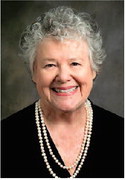
Share This Article On Social Media:
Explore Similar Categories:
 By Mary Wakefield Buxton
By Mary Wakefield Buxton
Urbanna, Va.— My husband Chip asked me last week why talk about past pain that area citizens suffered.
Because the only way for us to recover from it is to acknowledge it, I responded.
After the film “Green v. New Kent County” that was shown earlier this month at the Middlesex Historic Courthouse in Saluda, a panel was introduced: Dr. Calvin Green’s son, Anthony; 1966 MHS graduate Norman Robinson; Schreinaer Hodges, parent of integrating students; Hallie Jean Holmes, 1970 MHS graduate; and Rosetta Jarvis, who was among 29 black children that came to St. Clare Walker High School as part of the Class of 1957 before the county schools were integrated.
The program was an eye opener for people who had no! idea of what those tumultuous years were like in Virginia. I was a teenager happily enrolled in public school in Vermilion, Ohio, a state that never had “Jim Crow Laws,” and a small town on Lake Erie that did not have any black residents. The irony was I was also in an “all white” school.
There was no emotional upheaval, pain or trauma for me in high school other than putting up with juvenile boys in my class. I was a cheerleader, made good grades and studied as little as possible. I enjoyed school, which is what we want our children to do. (It would be nice if they learned something too.) I never dreamed that anyone could ever be caught up in social upheaval so intense that it could even cause a parent to be fired.
First to speak on the panel was Norman Robinson, MHS class of ’66. A member of the “Middlesex 13,” the first group of local blacks that integrated “white” MHS,! Robinson said by 1969 “black” St. Clare Walker High School cl! osed and full integration was implemented in Middlesex. From that point on all high school students in the county graduated from MHS.
“The first day of school at MHS I thought I’d died and gone to heaven!” he told the audience to much laughter. He recalled padded chairs and curtains in the auditorium, even a weight room, much nicer equipment all around. “The white boys didn’t speak at first but that problem soon went away.” He recalled one white boy asked him how he was doing on that first day and this encouraged him to carry on.
Schreinaer Hodges spoke next, one of the parents of the “Middlesex 13” that had sent her daughter, Violet, at age 13 to the 8th grade, George, 12, to 7th grade, and Sadye to 5th grade to the “white” school under the “freedom to choose” program. She was immediately fired from her job. Yet she continued on because “it wa! s the thing to do and the children were willing to go to the white school,” she said.
Hodges reported, “Everything went well after the “touching crisis” passed.” I had no idea what she was referring to but the mostly black audience burst into laughter. The “touching” crisis she referred to was the fear that apparently some white children had that if they touched a Negro their fingers would turn black.
Rosetta Dobbins Jarvis, part of the “West Point 29” students to first integrate white schools, lived in West Point. Her family paid West Point taxes but because she was black she was denied access to the “white” school in town. She and other blacks had to be bussed to a school 18 miles away if they wanted an education. The day came when she and other black students went to the “white” Hamilton Holmes High School to enroll. The principal met them ! at the door and barred their entrance. The group went downtown and “pic! keted” the stores in protest. She claimed the National Guard was called out to keep the peace. She was 14 years old.
Rosetta went on the explain she quit going to the “black” school and her father, who worked for Chesapeake Corp., was arrested for not sending his daughter to school and had to pay a $200 fine—no inconsequential sum in those days.
She and eight other black students from West Point finally enrolled in the all black St. Clare Walker High School in Middlesex County. They all piled into one station wagon for the daily trip. She was in the Class of 1957 at St. Clare Walker.
Hallie Jean Holmes, 1970 MHS grad, daughter of the late Josh Holmes (sheriff in Middlesex County who served until 1983), reported she rebelled against her family’s wishes for her to leave St. Clare Walker High Sch! ool and attend MHS. “I didn’t go to MHS until St. Clare Walker High School was closed in 1969,” she said.
Holmes remembered on that first day only one white student welcomed her, Kate Thomas, who became a lifelong friend. It was a difficult time for her and she admitted that she did not want to be at MHS. Yet, in spite of such challenges, the Holmes family was successful in Middlesex County as were many other black families.
To be continued.


